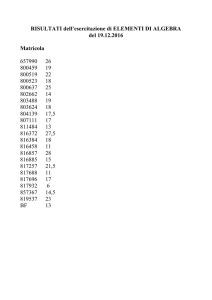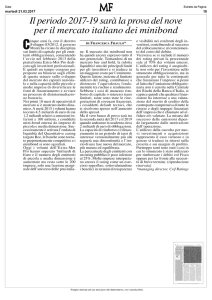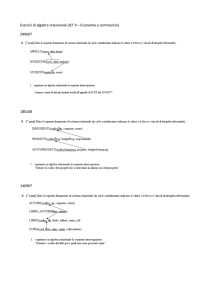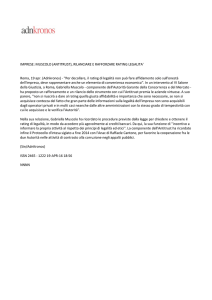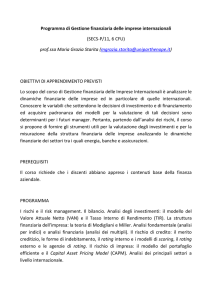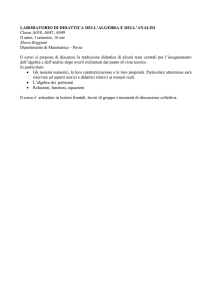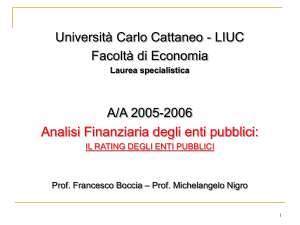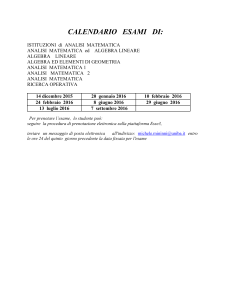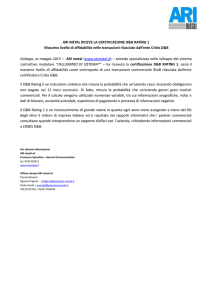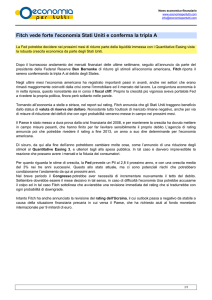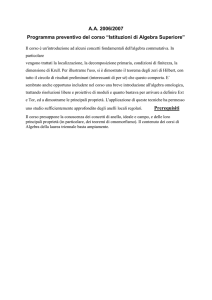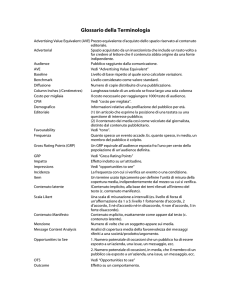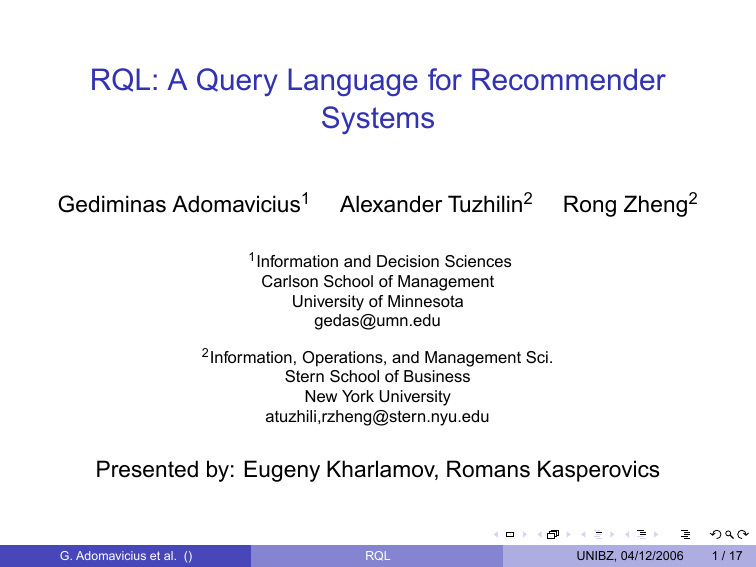
RQL: A Query Language for Recommender
Systems
Gediminas Adomavicius1
Alexander Tuzhilin2
Rong Zheng2
1 Information
and Decision Sciences
Carlson School of Management
University of Minnesota
[email protected]
2 Information,
Operations, and Management Sci.
Stern School of Business
New York University
atuzhili,[email protected]
Presented by: Eugeny Kharlamov, Romans Kasperovics
G. Adomavicius et al. ()
RQL
UNIBZ, 04/12/2006
1 / 17
Complete RQL Syntax
RECOMMEND recommend_dim_attr_list
TO recipient_dim_attr_list
FROM cube
BASED ON measure_list
WHERE dimension_restrictions //optional
WITH measure_restrictions //optional
AGGR BY aggregation_dim_attr_list //optional
HAVING aggregation_restriction //optional
SHOW measure_rank_restriction //optional, default: SHOW TOP 1
G. Adomavicius et al. ()
RQL
UNIBZ, 04/12/2006
2 / 17
RQL Query Parts
1
Core RQL query
TO recipient_dim_attr_list
FROM cube
BASED ON measure_list
WHERE dimension_restrictions
WITH measure_restrictions
AGGR BY aggregation_dim_attr_list
HAVING aggregation_restriction
2
Recommendation Wrapper
RECOMMEND recommend_dim_attr_list TO recipient_dim_attr_list
SHOW measure_rank_restriction
G. Adomavicius et al. ()
RQL
UNIBZ, 04/12/2006
3 / 17
Data Cube
hD, M, A, f , Li
D = {d1 , d2 , . . . , dn } – set of dimensions
M = {m1 , m2 , . . . , mk } – set of measures
A = {a1 , a2 , . . . , at } – set of attributes
f : D → 2A – mapping that identifies
[ a set of attributes for each
dimension: f (di ) ∩ f (dj ) = ∅ and
f (di ) = A
i
L = {l1 , l2 , . . . , lj } – set of cube cells, where li = haddri , conti i,
where addri ∈ dom(d1) × dom(d2) × . . . × dom(dn ) and
conti ∈ dom(m1) × dom(m2 ) × . . . × dom(mk )
G. Adomavicius et al. ()
RQL
UNIBZ, 04/12/2006
4 / 17
Recommendation Algebra
Restriction (RSTR)
Metric Projection (MRPJ)
Destroy Dimension (DTDM)
Aggregation (AGGR)
G. Adomavicius et al. ()
RQL
UNIBZ, 04/12/2006
5 / 17
RQL → Recommendation Algebra
op1 ⊕ op2 (cube) = op2 (op1 (cube))
MAP(RQL_Query)
(1) RA_op := ID
(2) if (∃ WHERE clause in RQL_Query) then
RA_op := RA_op ⊕ RSTR(dimension_restrictions);
(3) if (∃ WITH clause in RQL_Query) then
RA_op := RA_op ⊕ RSTR(measure_restrictions);
(4) if (∃ AGGR BY clause in RQL_Query) then
RA_op := RA_op ⊕ AGGR(aggregation_dim_attr_list);
(5) if (∃ HAVING clause in RQL_Query) then
RA_op := RA_op ⊕ RSTR(aggregation_restriction);
(6) RA_op := RA_op ⊕ MRPJ(M - measure_list);
(7) final_dim_list := f −1 (recommend _dim_attr _list)+
f −1 (recipient_dim_attr _list);
(8) RA_op := RA_op ⊕ DTDM(D − final_dim_list);
(9) Return RA_op;
G. Adomavicius et al. ()
RQL
UNIBZ, 04/12/2006
6 / 17
Snowflake Representation (ROLAP)
Profession D3.2
Name
Companion D1.1
Type
Genre D2.2
Name
Country D5.3
Name
User D3.1
Name
Age
Gender
Rating
PublicRating
PersonalRating
Movie D2.1
Name
Length
Year
City D5.2
Name
Theatre D5.1
Name
Capacity
Time D4.1
DoW D4.2
Weekend
DayOfTheWeek
G. Adomavicius et al. ()
RQL
UNIBZ, 04/12/2006
7 / 17
Recommendation Algebra → Relational Algebra
Restriction (RSTR)
Restriction on an attribute of Rating table:
Rating = σ[Pm ](Rating)
Restriction on an attribute of some dimension Di.n :
Di.n = σ[Pdn ](Di.n )
Di.(j−1) = (π[Xn](⊲⊳ [Di.(j−1).ID = Di.n .ID](Di(j−1) , Di.j )))
, j = 2, . . . , n
Rating = (π[Xr ](⊲⊳ [Di.1 .ID = Rating.Di ID](Di1 , Rating)))
G. Adomavicius et al. ()
RQL
UNIBZ, 04/12/2006
8 / 17
Recommendation Algebra → Relational Algebra
Metric Projection (MRPJ)
Rating = π[M − Mp ](Rating)
G. Adomavicius et al. ()
RQL
UNIBZ, 04/12/2006
9 / 17
Recommendation Algebra → Relational Algebra
Destroy Dimension (DTDM)
1
Drop all tables Di.1, . . . Di.m
2
Delete Di ID from Rating table
3
Merge similar tuples using aggregation function Faggr
Rating = π[D − Di ID](FN[M, Faggr , D − Di ](Rating))
G. Adomavicius et al. ()
RQL
UNIBZ, 04/12/2006
10 / 17
Recommendation Algebra → Relational Algebra
Aggregation (AGGR)
1
Join all the dimensions from Di.1 to Di.n
Di.(j−1) =⊲⊳ [Di.(j−1).ID = Di.j .ID](Di.(j−1), Di.j ), j = 2, . . . , n
2
Join Rating with Di.1 and update metrics with aggregated values
Rating = FN[M, Faggr , Di.n .ID](
⊲⊳ [Di.1 .ID = Rating.Di ID](Di.1 , Rating))
3
After the aggregation, Di.n becomes the basic table for the
dimension di (new Di.1)
Di.1 = Di.n
G. Adomavicius et al. ()
RQL
UNIBZ, 04/12/2006
11 / 17
Example: Mapping RQL Queries into SQL
Recommend top 5 action movies to the female users living in New York
RECOMMEND Movie TO User
FROM MovieRecommender
BASED ON PersonalRating
WHERE Movie.Genre = “Action” AND
Theater.City = “New York”
AND User.Gender = “Female”
SHOW TOP 5
G. Adomavicius et al. ()
RQL
UNIBZ, 04/12/2006
12 / 17
Example: Mapping RQL Queries into SQL
Translation to Recommendation Algebra
DTDM (Theater, Time, Company) (
MRPJ (PublicRating) (
RSTR (Movie.Genre = “Action”) (
RSTR(Theater.City = “New York”) (
RSTR (User.Gender = “Female”) (
MovieRecommender ) ) ) ) )
G. Adomavicius et al. ()
RQL
UNIBZ, 04/12/2006
13 / 17
Example: Mapping RQL Queries into SQL
Translation to Relational Algebra
User1 = σUser .Gender =Female (User)
Theater1 = ⊲⊳Theater .TheaterID=City .TheaterID (Theater,
σCity .CityName=NewYork (City))
Movie1 = ⊲⊳Genre.GenreID=Movie.GenreID (Movie,
σGenre.GenreName=Action (Genre))
Rating1 = ⊲⊳Moive1.MovieID=Rating.MovieID (Movie1,
⊲⊳Theater 1.TheaterID=Rating.TheaterID (Theater1,
⊲⊳User 1.UserID=Rating.UserID (User1, Rating)))
Rating2 = πPersonalRating (Rating1)
Rating3 = FNPersonalRating,AVG,{Theater ,Time,Company } (Rating2)
Rating4 = πMovie.Name,User .Name,User .ID (Rating3)
G. Adomavicius et al. ()
RQL
UNIBZ, 04/12/2006
14 / 17
Example: Mapping RQL Queries into SQL I
Translation to SQL
SELECT R4.MovieID, R4.UserId, R4.PersonalRatings
FROM
(SELECT *
FROM
(SELECT *
FROM Users
WHERE Users.Gender=“female”
) as U1,
(SELECT *
FROM
(SELECT *
FROM Theater,
(SELECT *
FROM City
WHERE City.CityName=“New York”
) as A
WHERE Theater.CityID = A.CityID
) as T1,
(SELECT *
FROM Rating,
(SELECT *
FROM Rating,
G. Adomavicius et al. ()
RQL
UNIBZ, 04/12/2006
15 / 17
Example: Mapping RQL Queries into SQL II
Translation to SQL
(SELECT *
FROM Movie,
(SELECT *
FROM Genre
WHERE Genre.GenreName =“Action”
) as G
WHERE Movie.GenreId = G.GenreId
) as M1
WHERE Rating.MovieID = M1.MovieID
) as R1
WHERE Rating.RatingId=R1.RatingId
) as R2
WHERE T1.TheaterId=R2.TheaterId
) as R3
WHERE U1.UserId =R3.UserId
) as R4
GROUP BY R4.MovieID, R4.UserID
G. Adomavicius et al. ()
RQL
UNIBZ, 04/12/2006
16 / 17
Example: Mapping RQL Queries into SQL
Romans’s Version
SELECT M.Name, M.ID, T.Name, T.ID, C.Name U.Name, U.ID, G.Name,
AVG(R.PersonalRating) AS PersonalRating
FROM Rating R, Movie M, Theatre T, City C, User U, Genre G
WHERE R.MovieID = M.ID AND R.TheatreID = T.ID
AND R.UserID = U.ID AND T.CityID = C.ID
AND M.GenreID = G.ID AND G.Name = “Action”
AND C.Name = “New York” AND U.Gender = “female”
GROUP BY M.Name, M.ID, T.Name, T.ID, C.Name U.Name, U.ID, G.Name
G. Adomavicius et al. ()
RQL
UNIBZ, 04/12/2006
17 / 17

